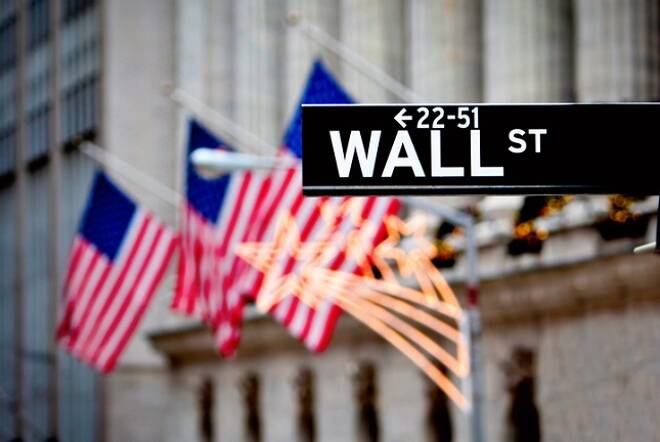Advertisement
Advertisement
S&P 500 Index Recovers About $1 Trillion in Market Value on Hopes Pandemic Could Level Off Soon
By:
The CBOE Volatility Index fell 3.3% to 45.24, the lowest level in about two weeks. Three weeks ago, the VIX hit a record high of 82.69, surpassing the peak level during the financial crisis.
The major U.S. stock index futures settled sharply higher on Monday with the benchmark S&P 500 Index recovering about $1 trillion in market value after a drop in the daily death toll in New York, the country’s biggest coronavirus hot spot, raised hopes that the pandemic could level off soon. Despite Monday’s bounce, the S&P 500 remains nearly 20% – or $6 trillion in market value – short of its all-time high in mid-February.
In the cash market, the benchmark S&P 500 Index settled at 2663.68, up 175.03 or +6.66%. The blue chip Dow Jones Industrial Average finished at 22679.99, up 1627.46 or +7.29% and the technology-based NASDAQ Composite closed at 7913.24, up 540.16 or +6.95%.
Sector Performance
Defensive utilities sector led with big gains, while consumer staples and real estate – also considered safe bets during times of volatility – rose between 3% and 8%. The S&P 500 banking index jumped 7.2% and was set for its best day in more than a week. Bank of America, Citigroup, Wells Fargo and JPMorgan advanced between 5.8% and 8.8%, tracking Treasury yields.
Volatility Index Falls to Two-Week Low
Wall Street’s fear gauge fell to its lowest in two weeks, but analysts cautioned against calling a bottom. During the financial crisis of 2007-08, the S&P 500 remains nearly 20% – or $6 trillion in market value – short of its all-time high in mid-February.
The CBOE Volatility Index fell 3.3% to 45.24, the lowest level in about two weeks. Three weeks ago, the VIX hit a record high of 82.69, surpassing the peak level during the financial crisis.
Earnings Season Recession
S&P 500 companies are expected to enter an earnings recession in 2020, with declines in profit in the first and second quarters, according to IBES data from Refinitiv, as demand evaporates across sectors including airlines, luxury goods and industrials. First-quarter expectations now call for an earnings decline of 6% from the year-ago period.
The Internals
Advancing issues outnumbered decliners by a 9.45-to-1 ratio on the NYSE and by a 6.01-to-1 ratio on the NASDAQ.
The S&P index recorded two new 52-week highs and no new lows, while the NASDAQ recorded six new highs and 23 new lows.
Some Analysts Not Impressed by Rally
“We still believe that the odds are quite high that the lows from March will be retested and probably undercut before this bear market comes to an end,” Matt Maley, chief market strategist at Miller Tabak, said in a note on Monday.
About the Author
James Hyerczykauthor
James Hyerczyk is a U.S. based seasoned technical analyst and educator with over 40 years of experience in market analysis and trading, specializing in chart patterns and price movement. He is the author of two books on technical analysis and has a background in both futures and stock markets.
Advertisement
